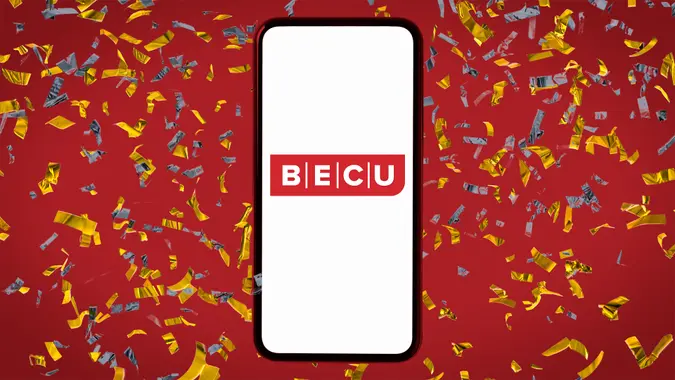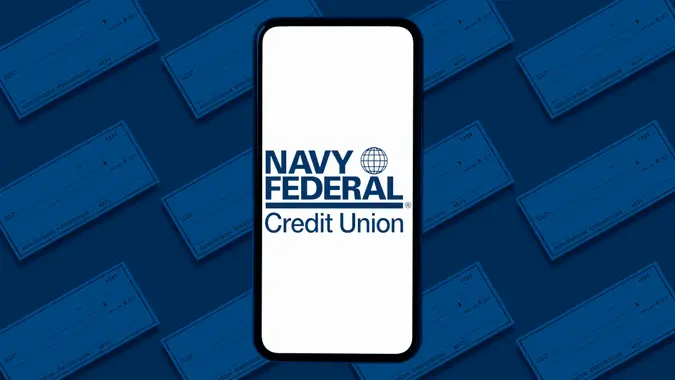What Is a Credit Union? A Complete Guide to Member-Owned Banking

Commitment to Our Readers
GOBankingRates' editorial team is committed to bringing you unbiased reviews and information. We use data-driven methodologies to evaluate financial products and services - our reviews and ratings are not influenced by advertisers. You can read more about our editorial guidelines and our products and services review methodology.

20 Years
Helping You Live Richer

Reviewed
by Experts

Trusted by
Millions of Readers
A credit union is a member-owned, not-for-profit financial institution that offers many of the same services as a traditional bank, but with a community-driven approach. They typically offer products and services, including:
- Checking accounts
- Savings accounts
- Certificates of deposit
- Loans
- Credit cards
Instead of maximizing profits for shareholders, credit unions return earnings to members through lower loan rates, higher savings yields and reduced fees.
Key Features of a Credit Union
Key characteristics of credit unions include:
- Member-Owned – Every account holder is a partial owner with voting rights.
- Not-for-Profit – Profits are reinvested to benefit members, not external investors.
- Community-Focused – Many credit unions serve specific regions, professions, or organizations.
- Personalized Service – Credit unions often offer better customer service and financial education programs
A unique feature of a credit union is that membership is usually restricted to particular groups. Those groups are the credit union’s “field of membership,” and they’re defined by the company members work for; their occupation; the location where they live, work, worship or attend school; or other shared characteristics.
The field of membership promotes a cooperative environment where the primary goal is to serve members’ needs.
How Does a Credit Union Work?
On the surface, credit unions function in much the same way banks do, offering customers a safe place to deposit funds and a full slate of financial products.
However, credit unions tend to take a more personal interest in the financial growth of their members. Account holders pool their money into the credit union, which serves as the organization’s funding.
Credit Unions vs. Banks
Credit unions operate similarly to banks but with a few key differences:
- Membership-Based – Unlike banks, which serve the general public, credit unions require members to meet certain eligibility criteria, such as living in a specific area or working for a particular employer.
- Member Control – Members elect a volunteer board of directors that oversees operations.
- Use of Funds – Deposits from members are used to provide loans to other members at competitive rates.
If a credit union makes a profit, instead of distributing dividends to shareholders (like a bank), it lowers loan rates, increases interest on savings or reduces fees for its members.
Services Offered by Credit Unions
Credit unions provide a wide range of financial services, often with better rates and lower fees than traditional banks.
| Service | Credit Union Benefits |
|---|---|
| Checking & Savings Accounts | Lower fees, higher interest rates |
| Auto Loans & Mortgages | Competitive rates, flexible terms |
| Credit Cards | Lower interest rates, fewer fees |
| Personal & Student Loans | Member-friendly repayment options |
| Financial Education | Free workshops and credit counseling |
Benefits of Credit Unions
Choosing a credit union over a bank comes with several advantages:
- Lower Fees – Many credit unions offer free checking accounts with no minimum balance.
- Better Interest Rates – Earn more on savings accounts and CDs than at a traditional bank.
- Lower Loan Rates – Credit unions typically provide auto loans, mortgages and personal loans at lower interest rates.
- Personalized Service – Smaller, member-focused institutions provide better customer service and financial education.
Drawbacks of Using a Credit Union
Although there are many benefits to becoming a credit union member, there a few potential downsides to consider.
- You may not meet membership requirements
- The credit union you qualify for might not have all of the products you want
- Credit unions don’t always have the money for the most advanced systems
Are Credit Unions Safe?
Yes! Credit unions are just as safe as banks. Here’s why:
- NCUA Insurance – Deposits are insured up to $250,000 per depositor by the National Credit Union Administration (NCUA), similar to FDIC coverage for banks.
- Financial Stability – Credit unions must meet strict financial regulations to ensure stability.
- Fraud Protection – Many credit unions offer security features like two-factor authentication and fraud alerts.
Before joining a credit union, check if it’s NCUA-insured to ensure your money is protected.
Steps to Join a Credit Union:
- Find an Eligible Credit Union – Some serve specific employers, regions, or organizations, while others allow anyone to join through a nominal donation to a partner organization.
- Meet Membership Criteria – You may need to prove residence, employment or affiliation.
- Complete an Application – This can often be done online or in person.
- Make an Initial Deposit – Most credit unions require $5 to $25 to open an account.
If you don’t qualify for a community-based credit union, some national credit unions allow you to become a member through a small charitable donation.
Is Joining a Credit Union Right for You?
If you’re looking for a banking alternative that offers lower fees, better interest rates, and personalized service, a credit union might be the perfect fit. With strong financial protections, community-focused values, and member benefits, credit unions provide a customer-first approach to banking.
Ready for your next steps? Find a credit union you’re eligible to join and start enjoying the benefits today!
Joe Evans, Daria Uhlig and Cynthia Measom contributed to the reporting for this article.
Editorial Note: This content is not provided by any entity covered in this article. Any opinions, analyses, reviews, ratings or recommendations expressed in this article are those of the author alone and have not been reviewed, approved or otherwise endorsed by any entity named in this article.
Our in-house research team and on-site financial experts work together to create content that’s accurate, impartial, and up to date. We fact-check every single statistic, quote and fact using trusted primary resources to make sure the information we provide is correct. You can learn more about GOBankingRates’ processes and standards in our editorial policy.
- National Credit Union Administration. "Overview of Federal Credit Unions."
- National Credit Union Administration. "Credit Union and Bank Rates 2024 Q2."
- National Credit Union Administration "Share Insurance Coverage "
- MyCreditUnion.gov "MyCreditUnion.gov"
- Federal Deposit Insurance Corporation "Deposit Insurance FAQ"
- National Credit Union Administration "Credit Union Locator"
 Written by
Written by  Edited by
Edited by  Fact Checked by
Fact Checked by 
























